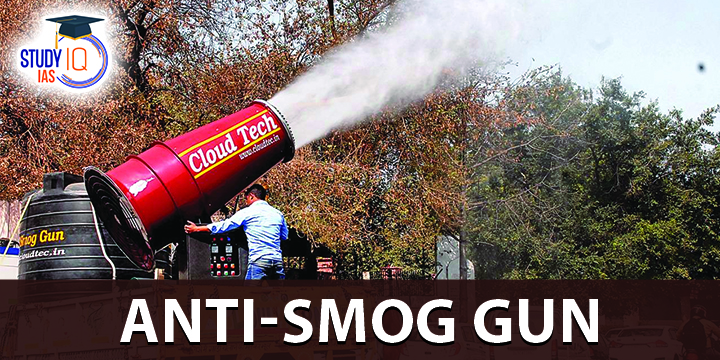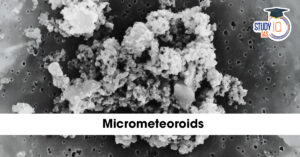Table of Contents
Anti Smog Gun in Delhi
Anti Smog Gun is an atomised water spraying device that can reduce air pollution in the atmosphere.
Anti Smog Gun Uses:
Construction sites: Previously, only large construction sites were required to use anti-smog gun, but now they have been mandated at smaller construction sites.
Road: Vehicle-mounted smog guns have been used to spray fine mist in an effort to get suspended dust settle.
Buildings: Smog guns are being placed atop buildings of around 7-10 storeys.
Working: The idea behind working of anti-smog guns is that water molecules sprayed into the atmosphere bind dust particles, forcing them to settle down on the ground.

Anti Smog Gun Uses
- Particulate dust settling: In winters, there is not enough humidity to settle dust particles. The anti-smog guns allow particulate matter to settle. However, it is not a permanent solution.
- It can be used locally when there is fire or construction and demolition dust. It cannot be effective for whole city.
- Smaller area: Anti Smog Guns can target only a small area and not the whole sky above the city. For the whole city, events like rain can reduce smog.
- Countries like China have used artificial rains to control haze but it can only be deployed at a larger scale and not concentrated areas.
- Use at source: Instead of firing the anti-smog guns at random sites, there are suggestions to use them at source sites such as traffic junctions and construction sites.
- However, there is no conclusive evidence to show its success due to lack of research.
- Moving suspended particles: Particles suspended in the air due to crop residue burning originate over surrounding areas and are brought to the city by winds. Reducing these particles using anti-smog guns is challenging.
Anti Smog Gun: Pollution in Delhi
Reasons for Pollution During Winters:
- Localized emissions: Majority of pollution in Delhi is caused due to industrial exhaust, burning of municipal waste, vehicular emission and construction waste. These add upto 80% of pollution source in the city and neighbouring areas.
- Inland winds: Winds flowing from coasts to the inland bring dust particles that hit the Himalayas and get trapped. This accumulates over northern plains, including Delhi.
- Low humidity: During winter, the region witnesses low levels of humidity. In absence of humidity, particulate matter keeps floating in the atmosphere without settling down.
- Trapping of cold air: Cooler air descends towards the ground during winter and warm air rises above it, acting as a lid. The cold air traps dust and associated particles to form smog.
Alternative ways to Control Pollution:
- Clean mobility: Clean mobility solutions such as electric vehicles and CNGs have to be promoted as majority of pollutants are vehicular emissions.
- Solutions to industrial emissions: Industrial emissions must be reduced by mandating scrubbers, absorbers and precipitators.
- Alternatives to stubble burning: Farmers have to be incentivized to give up stubble burning. Machines such as happy seeders can reduce instances of burning in agrarian regions.



 Micrometeoroids: Tiny Space Particles, M...
Micrometeoroids: Tiny Space Particles, M...
 India Needs a National Insolvency Tribun...
India Needs a National Insolvency Tribun...
 Unlocking the Potential of India–Afric...
Unlocking the Potential of India–Afric...

























